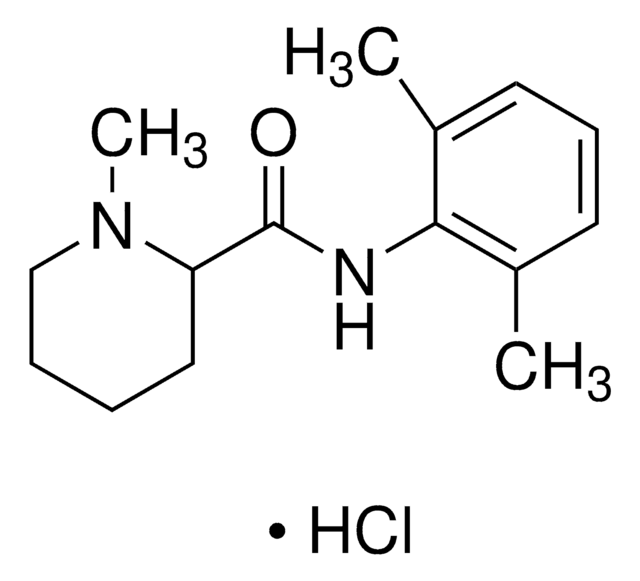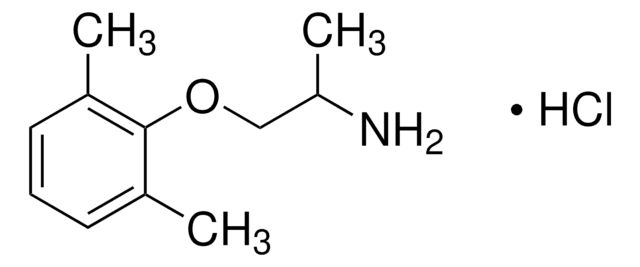Specyficzność
Clone 12-12E is a mouse monoclonal antibody that detects COP9 signalosome complex subunit 5 (COPS5). It targets an epitope within the N-terminal region.
Immunogen
His-tagged recombinant fragment corresponding to the first 198 amino acids from human COP9 signalosome complex subunit 5 (COPS5).
Zastosowanie
Quality Control TestingEvaluated by Western Blotting in HEK293T cell lysate.Western Blotting Analysis: A 1:500 dilution of this antibody detected COPS5 in HEK293T cell lysate.Tested ApplicationsWestern Blotting Analysis: A 1:500 dilution from a representative lot detected COPS5 in NIH3T3 cell lysate.Immunocytochemistry Analysis: A representative lot detected COPS5 in Immunocytochemistry applications (Kato, J.Y., et. al. (2006). Hybridoma. 25(6):342-8).ELISA Analysis: A representative lot detected COPS5 in ELISA applications (Kato, J.Y., et. al. (2006). Hybridoma. 25(6):342-8).Western Blotting Analysis: A representative lot detected COPS5 in Western Blotting applications (Kato, J.Y., et. al. (2006). Hybridoma. 25(6):342-8).Immunoprecipitation Analysis: A representative lot immunoprecipitated COPS5 in Immunoprecipitation applications (Kato, J.Y., et. al. (2006). Hybridoma. 25(6):342-8).Immunocytochemistry Analysis: A 1:25 dilution from a representative lot detected COPS5 in NIH3T3 cell line.Immunohistochemistry (Paraffin) Analysis: A representative lot detected COPS5 in Immunohistochemistry applications (Kato, J.Y., et. al. (2006). Hybridoma. 25(6):342-8).Note: Actual optimal working dilutions must be determined by end user as specimens, and experimental conditions may vary with the end user
Anti-COPS5, clone 12-12E, Cat. No. MABC1774, is a mouse monoclonal antibody that detects COPS5 and is tested for use in ELISA, Immunocytochemistry, Immunohistochemistry (Paraffin), Immunoprecipitation, and Western Blotting.
Opis wartości docelowych
COP9 signalosome complex subunit 5 (UniProt: Q92905; also known as SGN5, Signalosome subunit 5, Jun activation domain-binding protein 1, COPS5) is encoded by the COPS5 (also known as CSN5, JAB1) gene (Gene ID: 10987) in human. COPS5 is the fifth component of the COP9 signalosome (CSN) complex that directly interacts with and regulates the activity of cellular and developmental processes, including checkpoint control, DNA repair, apoptosis, and cell cycle control. This complex is an essential regulator of the ubiquitin conjugation pathway that mediates the deneddylation of the cullin subunits of the SCF-type E3 ligase complexes, leading to a reduction in ubiquitin ligase activity of SCF-type complexes. In the CSN complex, COPS5 probably acts as the catalytic center that mediates the cleavage of Nedd8 from cullins. However, it lacks the metalloproteinase activity and requires the other subunits of CSN complex. COPS5 is present both in the nucleus and cytoplasm. Its nuclear localization is reduced in the presence of interferon induced protein with tetratricopeptide repeats 3 (IFIT3). COPS5 contains a JAMM motif (aa 138-151) that is shown to be essential for the protease activity of the CSN complex. Higher levels of COPS5 are observed in a variety of human cancers and are correlated with a poor prognosis. (Ref.: Kato, J-Y., et al (2006). Hybridoma. 25(6); 342-348).
Postać fizyczna
Purified mouse monoclonal antibody IgG2a in buffer containing 0.1 M Tris-Glycine (pH 7.4), 150 mM NaCl with 0.05% sodium azide.
Przechowywanie i stabilność
Stable for 1 year at +2°C to +8°C from date of receipt.
Inne uwagi
Concentration: Please refer to the Certificate of Analysis for the lot-specific concentration.
Oświadczenie o zrzeczeniu się odpowiedzialności
Unless otherwise stated in our catalog or other company documentation accompanying the product(s), our products are intended for research use only and are not to be used for any other purpose, which includes but is not limited to, unauthorized commercial uses, in vitro diagnostic uses, ex vivo or in vivo therapeutic uses or any type of consumption or application to humans or animals.
This page may contain text that has been machine translated.








